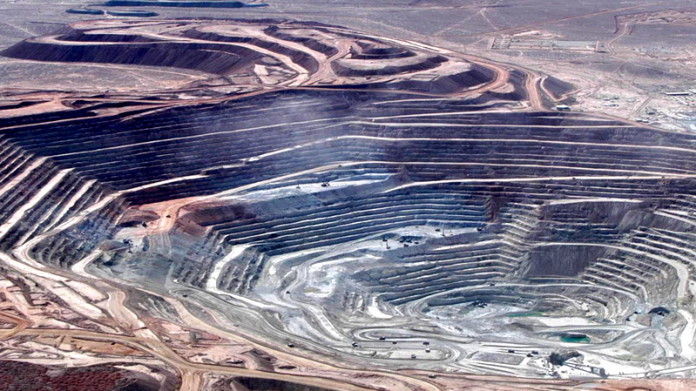
ANGLO American achieved 90% production by end-June as it emerged from COVID-19 lockdowns which included relatively stable production from its key copper assets, the group said in a second quarter production report.
“Building up from a production level of around 60% of total capacity in April, we continue to increase and had reached about 90% of production capacity by the end of June,” said Mark Cutifani, CEO of Anglo American. For the second quarter, overall group copper equivalent production was 18% lower year-on-year.
On a year-to-date basis, production was most heavily affected at De Beers, Anglo’s 85%-owned diamond producer, where numbers were 27% lower compared to the first half of the previous financial year. Diamond pricing was also under pressure. Second quarter rough diamond sales fell to $56m compared to $1.3bn owing to lower volumes and prices.
Diamond sales were also affected as buyers prefer to inspect goods personally and were therefore prevented from doing so owing to COVID-19 travel restrictions. De Beers cancelled the third sight of the year and allowed diamond manufacturers and polishers the option of deferring 100% of their purchases for the fourth and fifth sights.
Average realised rough diamond prices fell 21% to $119 per carat driven by a higher proportion of lower value rough diamonds sold and an 8% reduction in the average rough price index, said Anglo.
Platinum group metal production from Anglo American Platinum (Amplats) was 25% lower on a year-to-date basis. In terms of second quarter production, platinum and palladium production fell 41% to 307,400 ounces and 34% to 228,400 oz respectively. Amplats was also affected by technical problems at its processing facilities in Rustenburg which resulted in second quarter refined production for platinum and palladium falling 73% to 160,600 oz and 66% to 147,400 oz.
Production guidance (metal-in-concentrate) was unchanged at 1.5-1.7 million oz of platinum and one to 1.2 million oz of palladium, the group said.
On the positive side, production from Minas Rio – Anglo’s Brazilian iron ore producer – was 17% higher by dint of downtime at the operation in 2019 as it repaired a broken pipeline. Copper production was resilient, falling only 2% down year-on-year. It was 5% higher on a quarter-on-quarter basis. “Continued strong performances from our Minas-Rio iron ore operation in Brazil and the Collahuasi copper operation in Chile helped mitigate our overall decrease in production to 18%,” said Cutifani.
Total production volumes at Kumba Iron Ore was a fifth lower at some 8.5 million tons (Mt) owing to lockdown. Normal run-rates resumed in June, but finished stock levels increased to 6.2Mt from 5.6Mt as of end-March owing to to the impact of the COVID-19 restrictions at the port, Anglo said.
Guidance was unchanged although maintenance of the Minas Rio pipeline planned for the second quarter was postponed to the third or fourth quarters owing to COVID-19 lockdown measures.
Guidance was altered for Anglo’s metallurgical and thermal coal operations owing to non-COVID-19 disruptions at Grosvenor and Moranbah, metallurgical mines in Australia. An explosion injured five employees and led to the temporary suspension of mining at Grosvenor contributing to a 32% reduction in metallurgical coal export production.
As a result production guidance for metallurgical coal was revised to between 16 and 18Mt. Production guidance for export thermal coal was revised to about 21Mt from 22Mt due to the impact of COVID-19 related restrictions and lower production in response to demand at Cerrejón, the group said.











